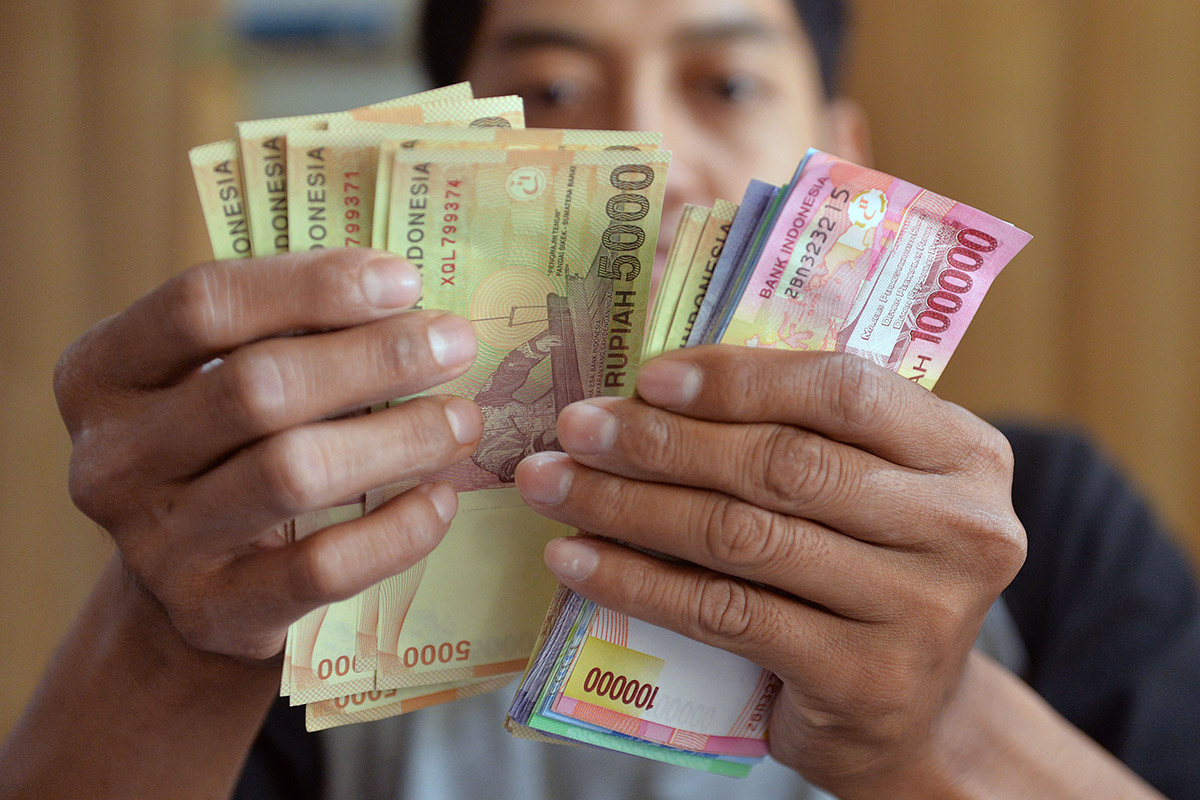After a turbulent past few months, the performance of the Indonesian rupiah in the exchange market is finally looking up. The Indonesian rupiah was trading at 13,370 rupiah per United States (US) dollar on Wednesday. The central bank, Bank Indonesia expects the rupiah’s performance in the foreign exchange market to be less volatile.
The rupiah hit rock bottom at the start of the month with their worst performance in two years. The rupiah hit a two-year low of 13,800 to the US dollar.
The rupiah this year has been extremely volatile. Part of the reason why Indonesia’s currency has been so weak is due to the fact that Bank Indonesia is forecasting an interest rate hike by the United States Federal Reserve.
While the US has not increased interest rates yet this year, many are expecting the Federal Reserve to increase rates soon. The US has seen an increase in economic growth and an uptick in inflation this year which usually points to an increase in interest rates. 
According to a summary of a meeting held at the Federal Reserve last month, a majority of participants noted that a stronger outlook for economic growth raised the likelihood that further gradual policy firming would be appropriate. Later that month, Federal Reserve Chairman Jerome Powell confirmed suspicions by stating “…further gradual rate increases in the federal funds rate will best promote attainment of our objectives.”
An increase in interest rates, would lead to the appreciation of the US dollar in the foreign currency exchange. According to the Jakarta Globe in February 2018, the increase in interest rates is also expected to trigger a capital outflow from emerging markets such as Indonesia. While an increase in interest rates could mean less economic activity in the domestic economy on the US, an interest rate hike also attracts investments in government securities, such as Treasury bills and bonds as it could mean higher returns on their investments. So, with the expectations of higher US interest rates, the Business Times reported earlier this month that overseas investors sold Indonesia’s stocks and bonds.
More recent developments in the markets have indicated that the Indonesian rupiah is slowly recovering and gaining stability. With their currency depreciating 1.5 percent in February, the rupiah was the worst performer in Asia and the third-worst among 24 emerging market currencies worldwide. However, Bank Indonesia dipped into their foreign exchange reserves to improve their economy. According to Reuters, Indonesia’s foreign exchange reserves fell US$3.9 billion in February because of Bank Indonesia’s intervention to support the rupiah. By the end of February, Indonesia’s foreign exchange reserves stood at US$128.1 billion, which is equivalent to 8 months of imports.
In a Reuters news article from earlier this week, Bank Indonesia claims that the currency will continue to strengthen and has committed to intervening in the market when necessary.
However, there are still fears that the rupiah would continue to depreciate. If it does continue to depreciate, it could hit hard on Indonesia’s foreign exchange reserves, which they already dipped into to stabilise the currency in February. Aldian Taloputra told the Jakarta Globe earlier this month that Indonesia has “shallow” foreign exchange markets. Despite having one of the largest populations in the region and being ranked 16th in the world in terms of GDP size, Indonesia’s foreign exchange reserves is much smaller compared to its neighbours Malaysia and Singapore. Continued intervention to stabilise the rupiah could cause a further strain on their foreign exchange reserves.
A depreciating currency could have its benefits too. For example, Indonesian exports could increase as they are now cheaper in the global market. On the flipside however, imports would be more expensive. This could cause a strain on certain parts of the Indonesian population that consume imported goods.
Aside from that, a depreciating rupiah would mean that their foreign debts would be more expensive to pay off.
While the Indonesian rupiah may look stable for now, there are still risks ahead. So far, Bank Indonesia has done tremendously well in stabilising the currency without inspiring panic. However, fears for Indonesia’s foreign currency reserves still persist.
